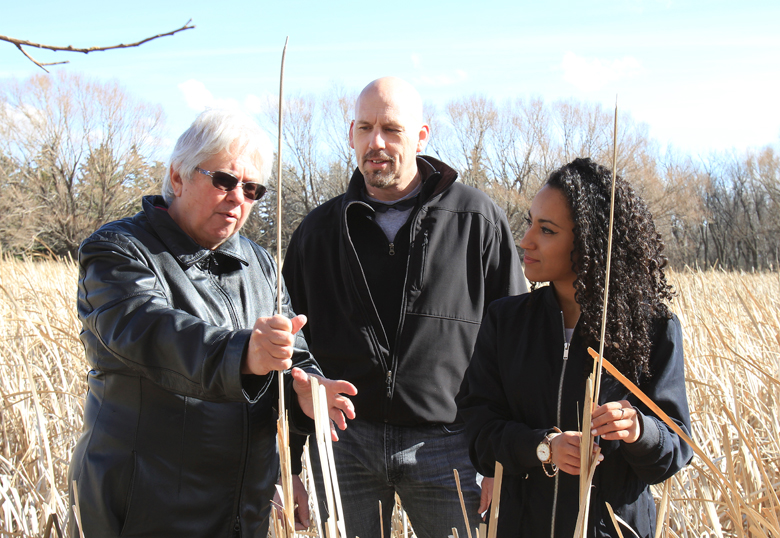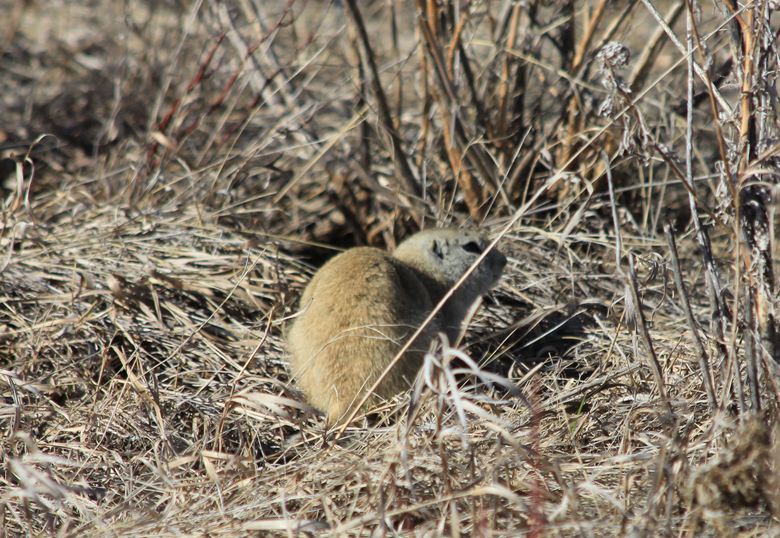For more than 30 years, Dr. Jennifer Mather has called the University of Lethbridge her workplace home. She’s rather fond of the place and wanted to mark the U of L’s 50th birthday with a special gift.
Mather says she’s been thinking about campus ecology for a while, since she, like many others, gets a great deal of pleasure from the flora and fauna around the U of L. Whether it’s a newborn fawn or eagles soaring over the river valley, Mather takes note. That spurred her to donate some funds to the U of L as an anniversary gift with the idea they be used to create a more ecologically friendly campus.

And on one of the coldest days of the winter, Mather and a student went around campus to take part in the annual winter bird count. She’d also conducted a bird count on campus during the summer and the total didn’t match Mather’s expectations.
“I didn’t see a lot of the birds I thought I should have seen,” she says. “I noticed that most of the campus didn’t have many. The places where I found birds were on the fringes where nobody had done campus improvement.”
That got her thinking about how campus ecology could be improved. Being a psychology professor, Mather knows that seeing a natural landscape, whether through a window or outside, has a beneficial effect on humans.
“We have an artificial environment here, we can’t possibly not because there are buildings, parking lots and roads. But to some extent, we can do the best we can with what we’ve got,” she says. “I thought if birds are any indicator, then we’re not giving the birds, and the animals and the plants, a good environment.”
Two biology instructors, Jennifer Burke and Dr. Randall Barley, expressed interest in getting the project going and an independent study was established. Funds from Mather’s gift will go to offset any costs incurred by students working on the project.
“I want students to be involved in this as much as possible,” says Mather. “The beginning will be mapping, figuring out the habitats, figuring out the soils and getting a bit of history. It’s a big project.”
Barley knew one of his students, Valentina Ibarra Galvis, was eager to get involved in a hands-on project. Ibarra Galvis, a third-year U of L student who recently switched her major to environmental science from biology, didn’t hesitate to accept.
“I’ve always been very passionate about the environment,” she says. “To me, Jennifer’s project sounded like an amazing opportunity, especially because it’s here on campus. It’s a learning experience and I more than willingly took on the project.”

Ibarra Galvis has been gathering historical information about the U of L, including the ecological assessment that was completed before the construction of University Hall. She’s also toured the campus with Phil Dyck, U of L grounds manager.
“I couldn’t have hoped for a more enthusiastic student than Valentina,” says Barley. “She has been fierce in her pursuit of information.”
Ibarra Galvis says she learned that much of what grows on campus is artificial, and the construction of University Hall likely destroyed some habitat. She has evaluated microhabitats on campus and she’ll be identifying the species found in each one. U of L geographers will also be called upon to provide information to make a map of campus. Ibarra Galvis intends to establish a database with all her findings as a reference for other students who work on the project in subsequent years.
“Instead of wiping out what we already have here and putting in all prairie species—because that could be very costly—what we want to do is look at disturbed areas and see how we can restore them and make it more natural,” she says. “The goal is also to be more sustainable. When you have more native species, an area can sustain itself. At the end of the day, this would also hopefully reduce the cost to the University for fertilizer and pesticide.”

“There are limitations and it will be about finding that balance between the biology and all of the other considerations,” says Barley. “If we can create additional habitat for species at risk or that are endangered, then we’d view those as high-value species in this type of project.”
Once Ibarra Galvis has completed the foundational work, students from other disciplines could carry the project forward. For example, a geography student could analyze soil samples or an education student could be involved in educating the campus community about the environs.
“My goal at the end of this semester is to have a map with each microhabitat labelled, with a description of the history of each one,” says Ibarra Galvis. “People don’t understand the value of such a unique ecosystem. It’s important to take care of our environment. We live in it and we need it to survive, too; we can’t forget that.”
